This summer I’ve been thrilled to witness the opening of West Gorton Community Park, writes Groundwork’s Amy Wright, a brand new park in the heart of Ardwick. It’s not your average park. Yes there’s a play area, grass and trees, but also a whole host of innovative features to combat climate change in our cities.
As a Community Project Lead at Groundwork, my role is all about empowering people to achieve their aspirations and create positive environmental and social change. I do this by delivering training and events, leading consultations and offering advice to create community-led, impactful projects.
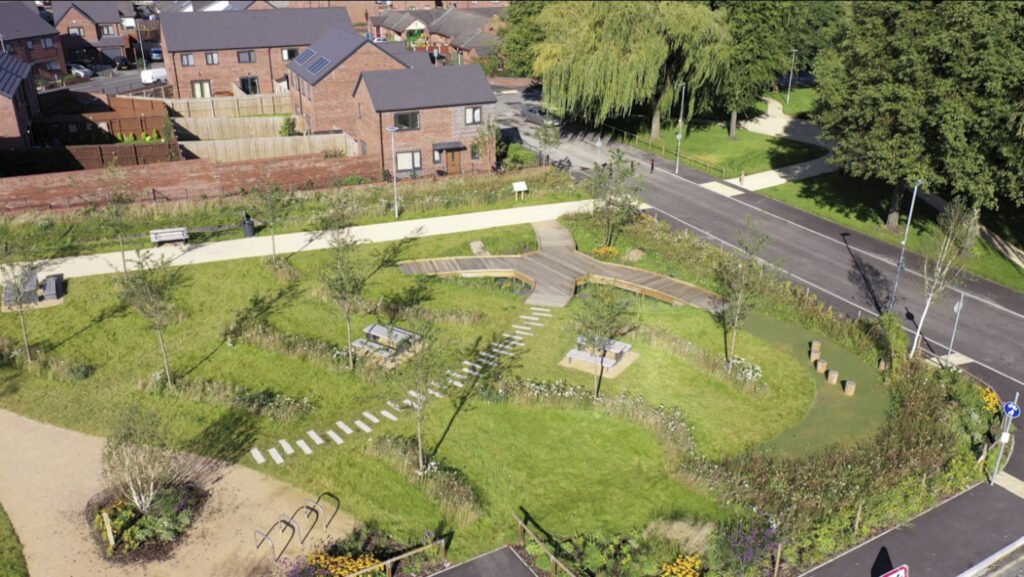
I first started working in West Gorton last year, although Groundwork had been involved for a few years, sub-contracted by Guinness Partnership to carry out community engagement in the area. It was exciting to see what had already been achieved through the GrowGreen project. We had consulted with lots of people – local residents, community groups and schools – and their aspirations, ideas and concerns directly fed into and shaped the design of the park.
Consulting with a whole community isn’t always easy. While hosting drop-ins to share the park designs with local residents, I met many who were concerned about anti-social behaviour, thinking that the park would just get trashed or not be used. It’s so important to listen to these views as much as those in support of your projects. We need to understand why anti-social behaviour is taking place, and find ways for a park to help to combat it.
By highlighting these issues, landscape architects BDP were able to incorporate design features to help alleviate people’s concerns. The expansive design and continuous flowing pathways open up the space, make it easier to see from one side to the other, and so make it feel safe.
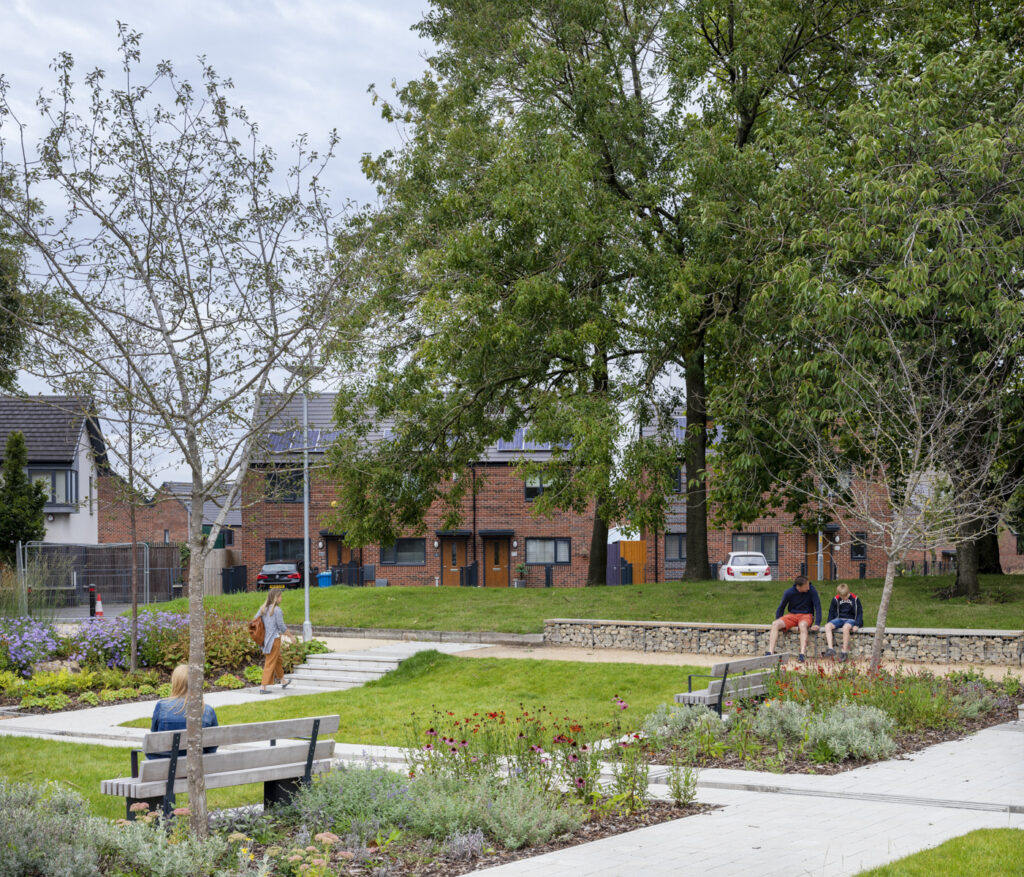
It’s so exciting to hear that researchers from the University of Manchester have already started to notice changes. More people are getting together and enjoying their environment, like the wildflower meadows. And, of course, the kids are loving the new play equipment.
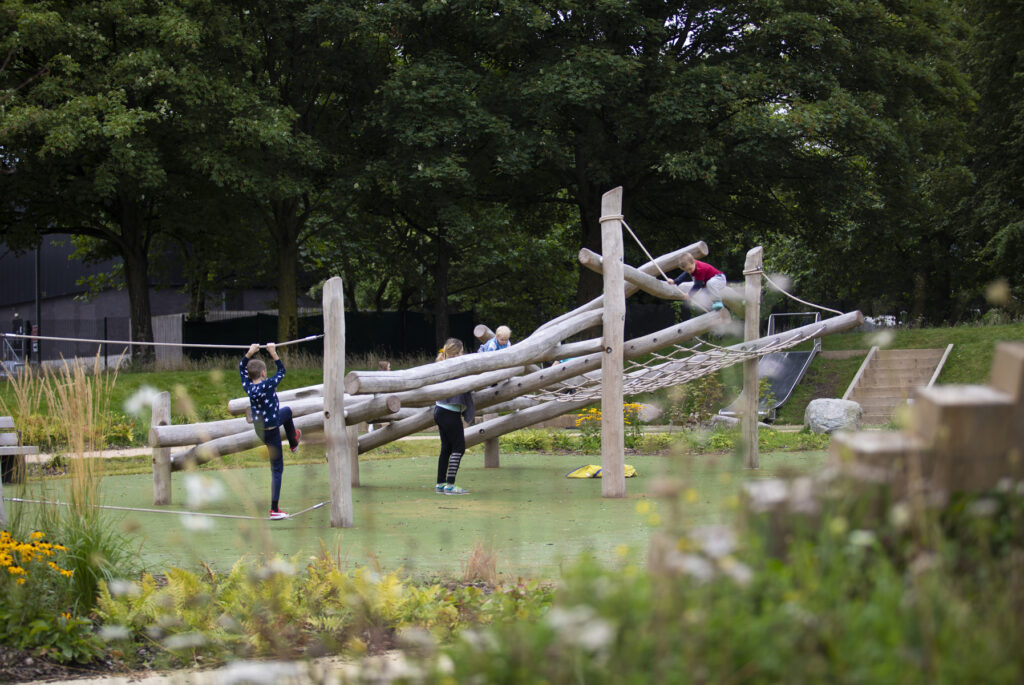
This is why listening to local people’s voices is so important to make sure we create spaces which are interesting, diverse, accessible and sustainable.
I’ve loved working on this project and meeting inspiring people, working tirelessly to make life better for others. Local resident Wardeh first moved to West Gorton with her family a few years ago from Syria. You’d be hard pressed to meet someone more warm and welcoming! Always keen to be involved, meet people and contribute positively, she has attended growing workshops, promoted the park through her wonderful writing and will be supporting a photo archive project to record the park’s development over time.
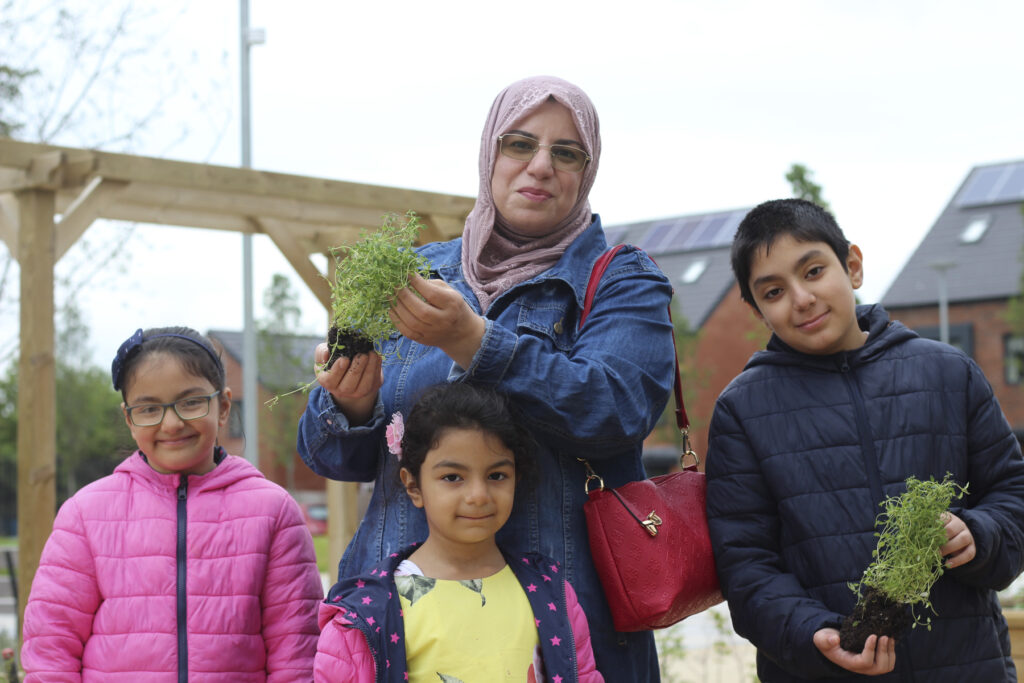
I also couldn’t write this without mentioning Heather and Dot, chairs of the local tenants’ and residents’ associations. It never fails to astound me how much can be achieved through the power of committed and passionate volunteers with a huge level of commitment to improving their area, sharing their views, ideas and challenges throughout the park’s design process.
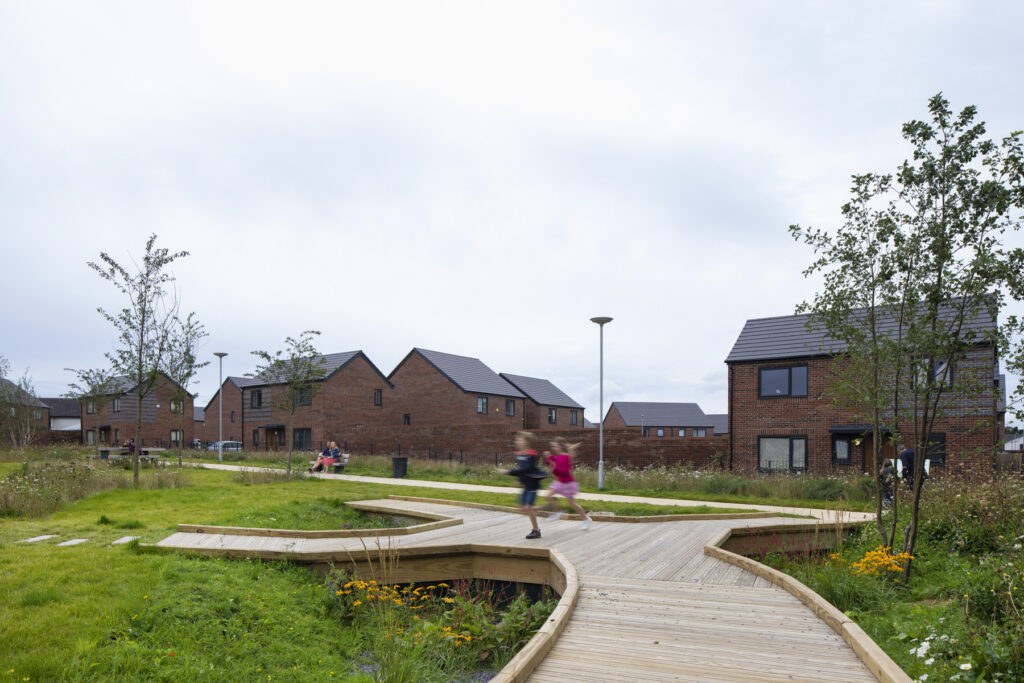
Although the park is now complete, a project like this is never truly over, as it lives and breathes through the people who live there. Aside from the monitoring which will be taking place over the next decade, to track the impacts on flooding and heat stress, the success of the space will rely on local people using and developing it as their own. I’m really looking forward to seeing how the park blossoms.
